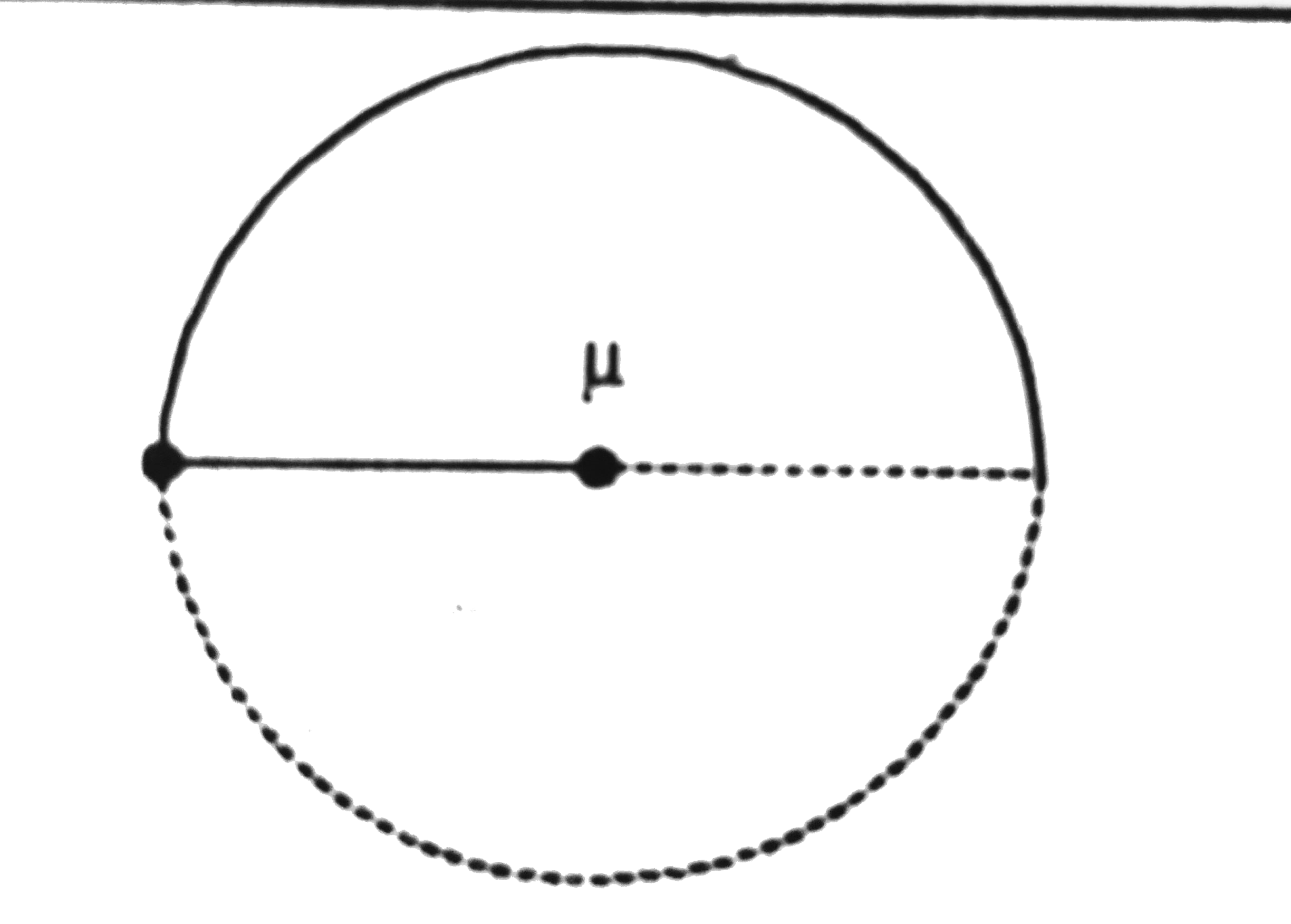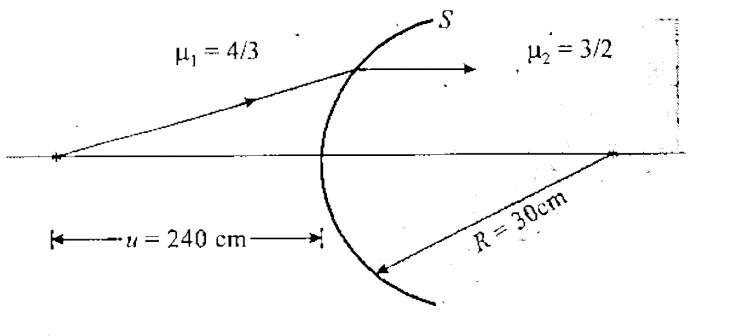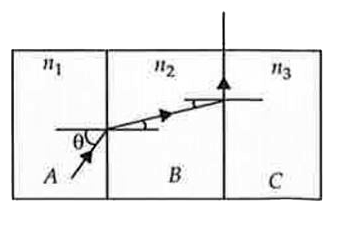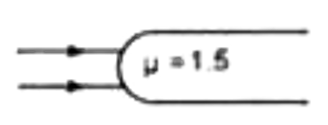A spherical surface of radius 30 cm separates two transparent media A and B with refractive indices 1'33 and 1.48 respectively. The medium A is on the convex side of the surface. Where should a point object be placed in medium A so that the paraxial rays become parallel after refraction at the surface ?Solution in Tamil
The correct Answer is:A, B, C
μ2v−μ1u=μ2−μ1R
−1.33u=0.1530×100

u=20×0.35100=−266cm
Topper's Solved these Questions
Similar Questions
If the light moving in a straight line bends by a small but fixed angle it may be a case of
03:13View SolutionThe electric field in a region is given by →E=35E0→i+45E0→j with E0=2.0×103NC−1. Find the flux of this field through a recatngular surface of area 0.2m2 parallel to the y-z plane.
06:16View SolutionFind the range of frequency of light that is visible to an average human being (400nm<λ<700nm)
02:51View SolutionTwo refracting media are separated by a spherical interfaces as shown in the figure. AB is the principal axis, mu_1 and mu_2 are the refractive indices of medium of incidence and medium of refraction respectively. Then,
12:18View SolutionDiscuss refraction from denser to rerer medium at a convex spherical refracting surface.
01:18View SolutionA convex refracting surface of radius of curvature 20cm separates two media of refractive indices 4/3and1.60. An object is placed in the first medium (μ=4/3) at a distance of 200cm from the refracting surface. Calculate the position of image formed.
View SolutionProceeding from Fermat'sprinciple derive the refraction formula for paraxial rays on a spherical boundary surface of radius R between media with refractive indices n and n'.
12:01View SolutionA spherical surface S separates two media 1 and 2 as shown in figure .Find where an object O is placed in medium -I so that the light rays from object after refraction becomes parallel to optic of this system

240 cm01:36View SolutionParallel rays of light are falling on convex sphere surface of radius of curvature R = 20 cm as show. Refractive index of the medium is μ=1.5. A refraction from the spherical surface parallel rays
 03:27View Solution
03:27View Solutionn1 तथा n2 अपवर्तनांक के दो माध्यमों को अलग करने वाले उत्तल गोलीय पृष्ट के लिये अपवर्तन सम्बन्धी सूत्र स्थापित कीजिए |
04:07View SolutionA concave spherical surface of radius of curvature 100 cm separates two media of refractive indices 1.50 and 43. An object is kept in the first medium at a distance of 30 cm from the surface. Calculate the position of the image.
01:38View SolutionA convex surface of radius of curvature 40 cm separate two media of refractive indices 43 and 1.50. An object is kept in the first medium at a distance of 20 cm from the surface. Calculate the position of the image.
02:46View Solutionदो माध्यमों A तथा B के बीच की सतह गोलाकार हैं जिसकी त्रिज्या 30 cm हैं । माध्यम A का अपवर्तनांक 1.33 तथा B का अपवर्तनांक 1.48 हैं । माध्यम A से देखने पर यह सतह उत्तल दिखती हैं । माध्यम A में एक बिंदुस्त्रोत को सतह से कितनी दूर पर रखा जाए कि इससे चलती उपाक्षीय किरणें अपवर्तन के बाद समानांतर हो जाएँ ?
03:19View Solution____________ is an optically transparent medium bounded by two spherical refracting surfaces or one plane and one spherical surface.
02:44View SolutionA,B and C are the parallel sided transparent media of refractive index n1,n2 and n3 respectively.
The are arranged as shown in the figure. A ray is incident at an angle θ on the surface of separation of A and B which is as shown in the figure. After the refraction into the medium B, the ray grazes the surface of separation of the media B and C. Then, sinθ= 09:16View Solution
09:16View Solutionप्रकाश की समान्तर किरणें वक्रता त्रिज्या R = 20 सेमी उत्तल सतह पर आपतित होती हैं। इसके माध्यम का अपवर्तनांक μ=1.5 है। गोलीय सतह से परावर्तन के बाद समान्तर किरणें
 04:12View Solution
04:12View Solution
